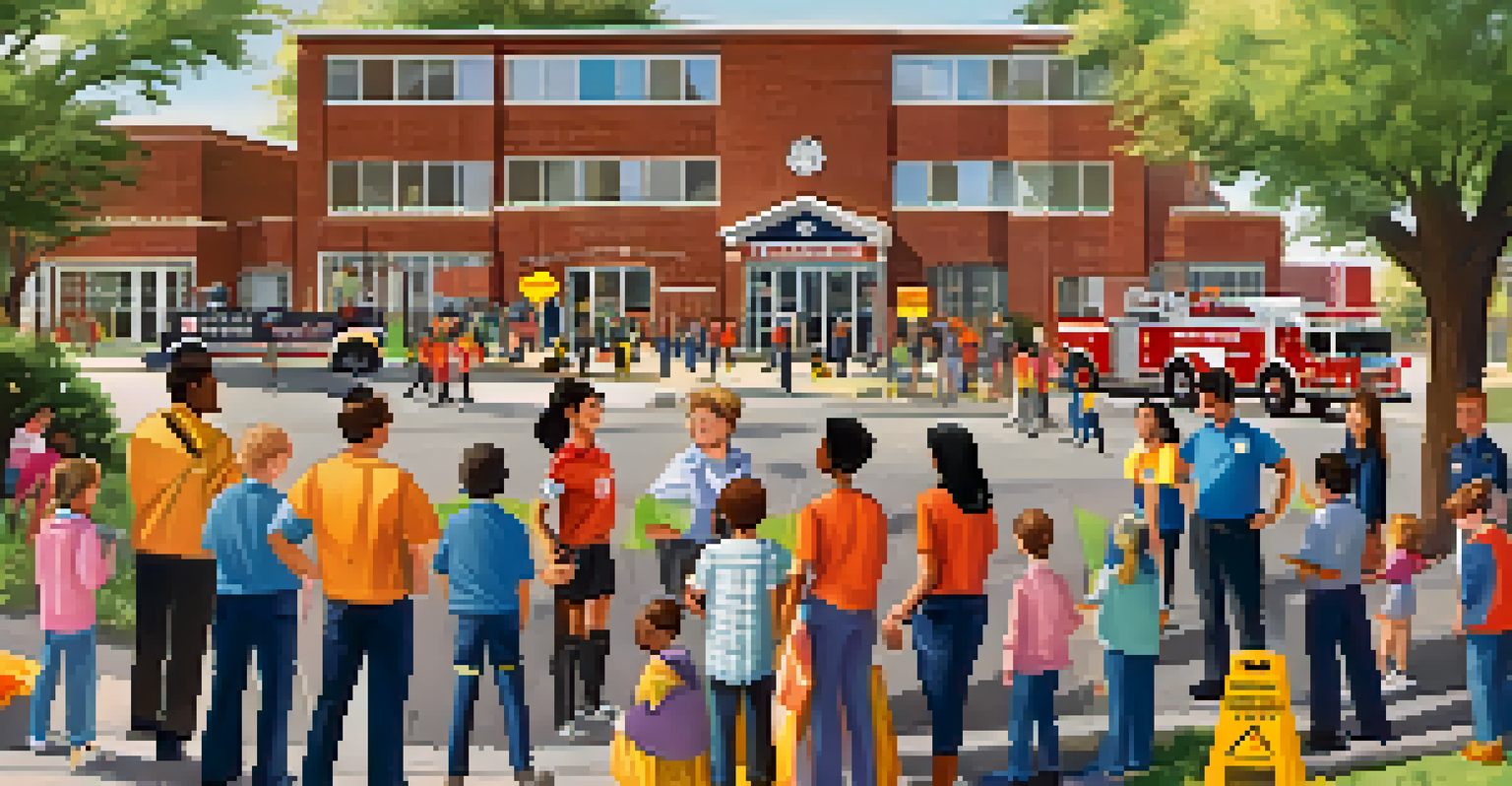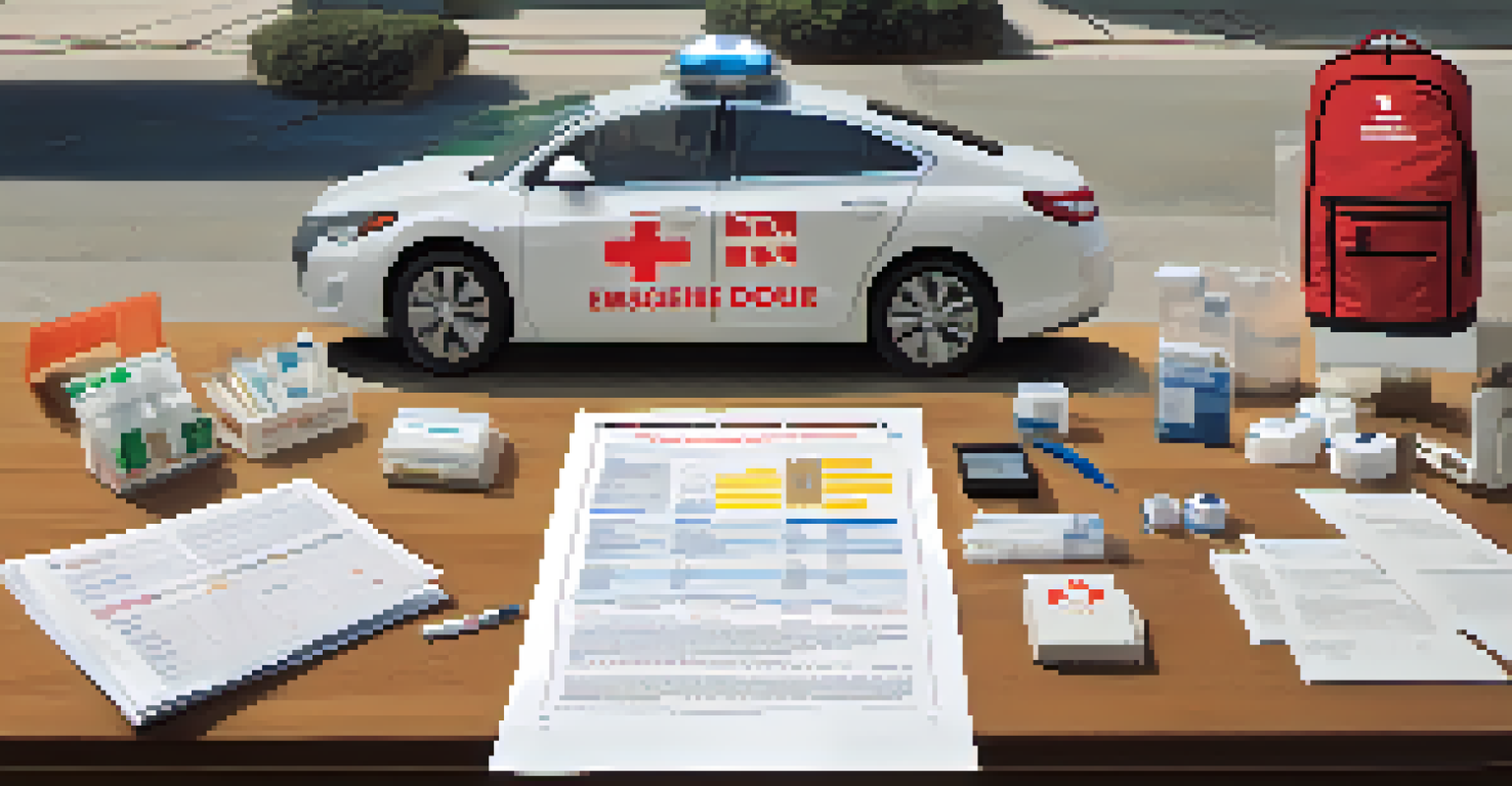Emergency Response Protocols for Educational Institutions

Understanding the Importance of Emergency Protocols
Emergency response protocols are critical for ensuring the safety of students and staff in educational institutions. They serve as a guide during crises, helping everyone understand their roles and responsibilities. By having clear protocols in place, schools can minimize chaos and confusion during emergencies, ultimately saving lives.
An ounce of prevention is worth a pound of cure.
Imagine a school facing a natural disaster or an active shooter situation. Without established protocols, panic can quickly take over, making it difficult for individuals to react appropriately. Therefore, having a well-documented and practiced emergency response plan is not just a good idea—it’s a necessity.
Furthermore, these protocols foster a sense of security within the school community. When students, parents, and staff know what to expect during an emergency, it builds trust and confidence in their institution's ability to protect them.
Types of Emergencies Educational Institutions Face
Educational institutions can encounter a variety of emergencies, ranging from natural disasters like earthquakes and floods to man-made situations such as violence or chemical spills. Each of these scenarios requires a tailored response plan, highlighting the need for flexibility in emergency protocols. Understanding the types of emergencies that may arise is crucial for effective preparation.

For instance, during a fire drill, students learn to evacuate safely, while lockdown drills prepare them for potentially dangerous intruders. These exercises not only equip students with the knowledge they need but also reinforce the importance of being calm and collected in stressful situations.
Importance of Emergency Protocols
Clear emergency response protocols are essential for ensuring safety and minimizing chaos during crises in educational institutions.
Ultimately, recognizing the diverse range of emergencies helps schools develop comprehensive protocols that cover all bases, ensuring that no matter what happens, they are ready to respond effectively.
Creating an Effective Emergency Response Plan
Developing an effective emergency response plan involves collaboration among school administrators, local law enforcement, and emergency services. This teamwork ensures that all perspectives and expertise are considered, leading to a more robust plan. It's essential to involve teachers and even students in the planning process, as they can offer valuable insights.
The time to repair the roof is when the sun is shining.
A well-crafted plan should include clear procedures for evacuation, lockdown, and communication during emergencies. For example, assigning specific roles to staff members, such as floor monitors or communication leads, can streamline the response process. Regularly reviewing and updating this plan is vital to address any new challenges or changes in the school environment.
Moreover, training sessions and drills should be conducted regularly to familiarize everyone with the protocols. The more practiced and prepared the school community is, the more effective they will be in a real emergency.
Communication Strategies During Emergencies
Effective communication is crucial during an emergency situation, as it ensures that everyone is informed and can act swiftly. Schools should establish a reliable communication system that can function even during power outages or network failures. For instance, utilizing two-way radios or a dedicated emergency line can be invaluable.
Moreover, it's essential to have a clear messaging strategy in place. This includes who will communicate what information and through which channels, whether it be text alerts, emails, or social media updates. Keeping communication consistent and transparent helps to prevent misinformation from spreading.
Training Enhances Preparedness
Regular training for staff and students improves their ability to respond effectively in emergencies, fostering a culture of safety.
Finally, schools should not forget to communicate with families during emergencies. Providing timely updates about the situation and safety measures can help alleviate anxiety and build trust with the community.
Training Staff and Students for Emergencies
Training is a fundamental aspect of emergency preparedness, and it should be an ongoing effort within educational institutions. Regular training sessions for staff and students can significantly improve their ability to respond effectively during a crisis. These sessions can cover various scenarios, from first aid to evacuation techniques.
For example, conducting simulations allows everyone to practice their responses in a controlled environment. This hands-on experience not only boosts confidence but also highlights areas for improvement in the emergency response plan. Engaging students in the training process adds an additional layer of understanding and readiness.
Incorporating emergency preparedness into the school curriculum can also ensure that students are equipped with the knowledge they need to stay safe. This proactive approach nurtures a culture of safety and awareness that extends beyond the classroom.
Involving Parents and the Community
Involving parents and the broader community in emergency response planning is vital for creating a comprehensive safety net. Schools can host workshops or informational sessions to educate families about the protocols in place and how they can contribute. This collaboration fosters a sense of community and shared responsibility for safety.
Additionally, schools can partner with local organizations, such as fire departments and police, to ensure that everyone is on the same page regarding emergency responses. These partnerships can also provide valuable resources and training opportunities for staff and students.
Community Involvement is Key
Engaging parents and the community in emergency planning strengthens overall safety and builds trust within the school environment.
As a result, when parents and community members are aware of and participate in emergency preparedness efforts, it strengthens the overall safety of the school environment and enhances trust between families and educators.
Continuous Improvement of Emergency Protocols
Emergency response protocols should never be static; they require continuous evaluation and improvement. After every drill or actual emergency, schools should conduct a thorough review to identify what worked and where adjustments are needed. This reflective practice is essential for enhancing the effectiveness of response plans.
Moreover, gathering feedback from staff, students, and even parents can provide valuable insights into the protocols' strengths and weaknesses. For instance, if students feel unsure about the evacuation routes, schools can address those concerns by improving signage or conducting additional drills.

By fostering a culture of continuous improvement, educational institutions can adapt their emergency response plans to meet evolving challenges and ensure that they are always prepared for any situation.